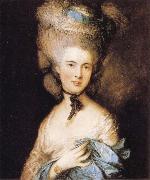
Oil On
Canvas, Real Flavor of Old Masters
|
Jean Baptiste Camille Corot
|
|||
|
|
|||
|
|
|||
|
|
Woman in Blue Jean Baptiste Camille Corot8.jpg Painting ID:: 479 Visit European Gallery |
1874 Musee du Louvre, Paris | |
Height Width |
INS/CM |
||
|
X |
|
||
|
|
|||
|
Thomas Gainsborough
|
|||
|
|
|||
| 1727-1788 British Thomas Gainsborough Locations English painter, draughtsman and printmaker. He was the contemporary and rival of Joshua Reynolds, who honoured him on 10 December 1788 with a valedictory Discourse (pubd London, 1789), in which he stated: If ever this nation should produce genius sufficient to acquire to us the honourable distinction of an English School, the name of Gainsborough will be transmitted to posterity, in the history of Art, among the very first of that rising name. He went on to consider Gainsborough portraits, landscapes and fancy pictures within the Old Master tradition, against which, in his view, modern painting had always to match itself. Reynolds was acknowledging a general opinion that Gainsborough was one of the most significant painters of their generation. Less ambitious than Reynolds in his portraits, he nevertheless painted with elegance and virtuosity. He founded his landscape manner largely on the study of northern European artists and developed a very beautiful and often poignant imagery of the British countryside. By the mid-1760s he was making formal allusions to a wide range of previous art, from Rubens and Watteau to, eventually, Claude and Titian. He was as various in his drawings and was among the first to take up the new printmaking techniques of aquatint and soft-ground etching. Because his friend, the musician and painter William Jackson (1730-1803), claimed that Gainsborough detested reading, there has been a tendency to deny him any literacy. He was, nevertheless, as his surviving letters show, verbally adept, extremely witty and highly cultured. He loved music and performed well. He was a person of rapidly changing moods, humorous, brilliant and witty. At the time of his death he was expanding the range of his art, having lived through one of the more complex and creative phases in the history of British painting. He painted with unmatched skill and bravura; while giving the impression of a kind of holy innocence, he was among the most artistically learned and sophisticated painters of his generation. It has been usual to consider his career in terms of the rivalry with Reynolds that was acknowledged by their contemporaries; while Reynolds maintained an intellectual and academic ideal of art, Gainsborough grounded his imagery on contemporary life, maintaining an aesthetic outlook previously given its most powerful expression by William Hogarth. His portraits, landscapes and subject pictures are only now coming to be studied in all their complexity; having previously been viewed as being isolated from the social, philosophical and ideological currents of their time, they have yet to be fully related to them. It is clear, however, that his landscapes and rural pieces, and some of his portraits, were as significant as Reynolds acknowledged them to be in 1788. | |||
|
|
|||
|
|
Woman in Blue new9/Thomas Gainsborough-995832.jpg Painting ID:: 33817 Visit European Gallery |
mk86 before 1780 Oil on canvas 76x64cm St Petersburg,Hermitage | |
Height Width |
INS/CM |
||
|
X |
|
||
|
|
|||
|
Jean Baptiste Camille Corot
|
|||
|
|
|||
| 1796-1875 Corot Locations French painter, draughtsman and printmaker. After a classical education at the College de Rouen, where he did not distinguish himself, and an unsuccessful apprenticeship with two drapers, Corot was allowed to devote himself to painting at the age of 26. He was given some money that had been intended for his sister, who had died in 1821, and this, together with what we must assume was his family continued generosity, freed him from financial worries and from having to sell his paintings to earn a living. Corot chose to follow a modified academic course of training. He did not enrol in the Ecole des Beaux-Arts but studied instead with Achille Etna Michallon and, after Michallon death in 1822, with Jean-Victor Bertin. Both had been pupils of Pierre-Henri Valenciennes, and, although in later years Corot denied that he had learnt anything of value from his teachers, his career as a whole shows his attachment to the principles of historic landscape painting which they professed. | |||
|
|
|||
|
|
Woman in Blue new9/Jean Baptiste Camille Corot-874975.jpg Painting ID:: 33874 Visit European Gallery |
mk87 1874 Oil on canvas 80x51cm Paris,Musee National du Louvre | |
Height Width |
INS/CM |
||
|
X |
|
||
|
|
|||









